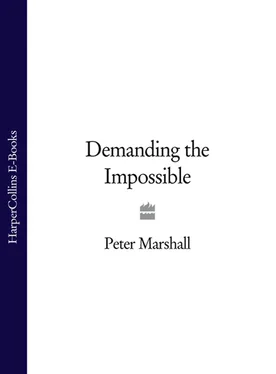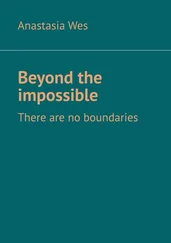His aristocratic compatriot Peter Kropotkin tried, in the latter half of the century, to make anarchism more convincing by developing it into a systematic social philosophy based on scientific principles. He further refined Bakunin’s collectivism – which had looked to distribute wealth according to work accomplished – by giving it a more communistic gloss. Reacting against Kropotkin’s mechanistic approach, the Italian Errico Malatesta brought about a major shift by emphasizing the importance of the will in social struggle. During this period Benjamin R. Tucker in America also took up Proudhon’s economic theories but adopted an extreme individualist stance.
Although Tolstoy did not publicly call himself an anarchist because of that title’s associations with violence, he developed an anarchist critique of the State and property based on the teachings of Christ. As a result, he helped develop an influential pacifist tradition within the anarchist movement.
In the twentieth century, Emma Goldman added an important feminist dimension, while more recently Murray Bookchin has linked anarchism with social ecology in a striking way. More recent anarchist thinkers have, however, been primarily concerned with the application of anarchist ideas and values. The Russian Revolution and the Spanish Republic both proved great testing-grounds for anarchism before the Second World War. After it, the flood of anarchy subsided, but it did not disappear; the demographic complexion of the movement merely became more middle-class, and, since the sixties, the New Left, the counter-culture, the peace, feminist and Green movements have all taken up many central anarchist themes.
But while anarchism is a broad river, it is possible to discern a number of distinctive currents. What principally divides the family of anarchists is their different views of human nature, strategy and future organization. The mainstream is occupied by the social anarchists, but the individualists form an important part of the flow. Amongst the social anarchists, there are mutualists, collectivists, communists, and syndicalists who differ mainly on the issue of economic organization. Some may be grouped according to their ideas, like the spiritual and philosophical anarchists; others according to their strategies, like the pacifist anarchists.
The social anarchists and individualists often work together but bear differing emphases. The individualists see the danger of obligatory cooperation and are worried that a collectivist society will lead to the tyranny of the group. On the other hand, the social anarchists are concerned that a society of individualists might become atomistic and that the spirit of competition could destroy mutual aid and general solidarity. Such differences do not prevent both wings coming together in the notion of communal individuality, which attempts to achieve a maximum degree of personal freedom without destroying the community.
The boundaries between the different currents of anarchism are not clear-cut; indeed they often flow into each other. Mutualism, collectivism, communism, and syndicalism might well exist side by side within the same society, as different associations and districts experiment with what best meets their specific wants and demands. No anarchist would be comfortable laying down an incontrovertible blueprint for future generations.
Spiritual anarchists see humans as primarily spiritual beings capable of managing themselves without the curb of external government. Most of them reject man-made laws in favour of a prior obligation to natural law or the law of God; some go even further to insist that in a state of grace no law, whether human or divine, is applicable. They generally assume that human impulses are fundamentally good and beneficent. Spiritual anarchism is not linked to any particular creed or sect, but its adherents all reject organized religion and the hierarchical church.
Like Tolstoy and Gandhi, many spiritual anarchists subscribe to pacifist beliefs. Pacifist anarchists refuse to use physical violence even to repel violence. They see the State and government as the ultimate expressions of organized violence, agreeing, with Randolph Bourne, that ‘War is the Health of the State’. In their vocabulary, the State stands for legalized aggression, war mass murder, conscription slavery, and the soldier a hired assassin. They argue that it is impossible to bring about a peaceful and free society by the use of violence since means inevitably influence the nature of ends. It therefore follows, as Bart de Ligt argued, ‘the greater the violence, the less revolution’. 5 The preferred tactics of the pacifist anarchists are non-violent direct action, passive resistance and civil disobedience; they engage in strikes, boycotts, demonstrations and occupations.
Philosophical anarchism has often been despised by militants, although clearly any action executed without thought is just an arbitrary jerk. All anarchists are philosophical in a general sense, but it is usual to call those thinkers philosophical anarchists who have reached anarchist conclusions in their search for universal principles without engaging in any practical activity. While the philosophical anarchists like Godwin have tended to stay aloof from direct action, the great anarchist thinkers of the nineteenth century – Proudhon, Bakunin and Kropotkin – were actively involved in promoting the application of their distinctive strain of anarchism.
Proudhonism was the first current in anarchism to emerge (in Europe from the 1840s on) as an identifiable social movement, with federalism as the means of organization, mutualism as the economic principle and anarchy as the goal. The indispensable premiss of mutualism was that society should be organized, without the intervention of a State, by individuals who are able to make free contracts with each other. To replace the existing State and Capital, mutualists proposed, and tried to create, a co-operative society, comprising individuals who exchange the necessities of life on the basis of labour value and obtain free credit through a people’s bank. Individuals and small groups would still possess their instruments of labour, and receive the produce thereof. Associations based on mutualité (reciprocity) would ensure that exchange took place in the proper fashion by employing a system of labour notes valued according to the average working time it took to make a product.
On a larger scale, mutualists suggested that local communities link up in a federalist system. Society would thus become a vast federation of workers’ associations and communes co-ordinated by councils at the local, regional, national and international level. Unlike parliaments, the members of the councils would be delegates, not representatives, without any executive authority and subject to instant recall. The councils themselves would have no central authority, and consist of co-ordinating bodies with a minimal secretariat.
Mutualism was not only taken up by members of the first International Working Men’s Association (IWMA); many revolutionaries in the Paris Commune of 1871 called themselves mutualists. Since it made no direct attack on the class system, mutualism tended to appeal to craftsmen and artisans, shopkeepers and small farmers, who valued their independence rather more than did the industrial working class.
It was not long before delegates within the federalist wing of the IWMA developed Proudhon’s mutualist economic doctrine towards collectivism. Bakunin used the term for the first time at the Second Congress of the League of Peace and Liberty at Bern in 1868. Collectivists believed that the State should be dismantled and the economy organized on the basis of common ownership and control by associations of producers. They wished to restrict private property only to the product of individual labour, but argued that there should be common ownership of the land and all other means of production.
Читать дальше












